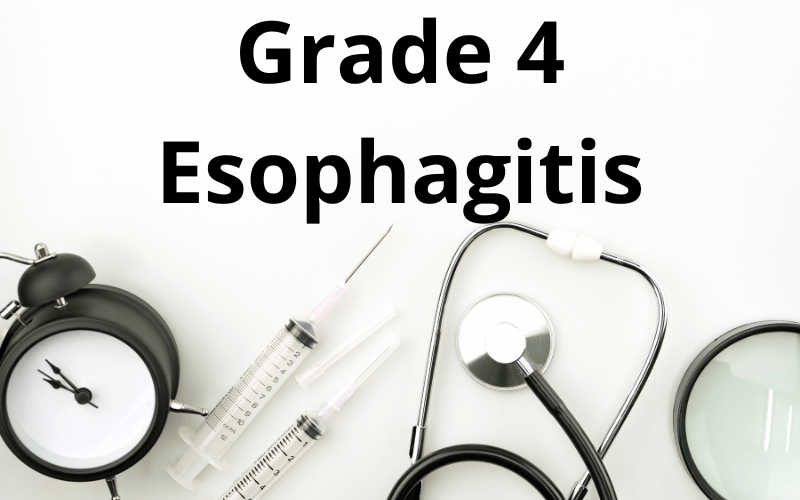Grade 4 Esophagitis

Grade 4 Esophagitis represents the zenith of esophageal damage. It’s the stage where the esophagus displays widespread erosions that exceed 50% of the mucosal surface. Comparatively, this could be visualized as a battlefield post-war, scars and all. The defenses of the esophagus are not just compromised; they are significantly ravaged. The constant battering from stomach acids, coupled with other contributing factors, has relentlessly eroded the esophagus’s mucosal lining. It’s akin to a protective shield that’s been repeatedly struck till it showcases significant breaches.
By Grade 4, symptoms aren’t merely persistent; they are debilitating. Heartburn, previously an annoying visitor, now becomes a permanent, agonizing resident. The act of swallowing transforms into an ordeal, with food and even liquids causing discomfort and, at times, pain. The throat’s burning sensation, previously comparable to a sunburn, now feels like an open flame. There’s also a constant sensation of something lodged in the throat, leading to bouts of choking. One might even regurgitate food, especially if it hasn’t been chewed thoroughly. Nutritional deficiencies may arise since eating becomes such a challenge.
By this stage, the line between cause and effect gets blurred. Chronic GERD remains a significant player, but the consistent damage renders the esophagus more susceptible to other factors. Chronic alcohol intake, smoking, and medication-induced damage gain prominence. Additionally, the risk of strictures, or narrowing of the esophagus, heightens, often resulting from scar tissue. Infections, especially in those with compromised immunity, can further worsen the condition.
Grade 4 demands a multifaceted treatment approach. Medications, both to reduce stomach acid and to aid esophageal healing, become foundational. Proton pump inhibitors and H2 blockers remain critical. But in certain severe instances, surgical intervention may be necessary. This could involve strengthening the esophageal sphincter or addressing strictures. Lifestyle and dietary modifications move from being mere recommendations to imperatives. Acidic, spicy foods, caffeinated beverages, alcohol, and smoking must be curtailed, if not completely eliminated.
Grade 4 Esophagitis isn’t just a medical condition; it’s a clarion call for comprehensive care. Given the severe implications on quality of life and potential complications, it demands immediate and aggressive intervention. Addressing it isn’t merely about symptom relief but ensuring overall esophageal health and, by extension, systemic well-being. In wrapping up this detailed look at the four grades of esophagitis, the journey from Grade 1 to 4 underscores the importance of early detection, timely intervention, and consistent care. Each grade, while distinct in its symptoms and implications, weaves into the larger narrative of esophageal health, signaling the need for vigilance and proactive healthcare approaches. (4)